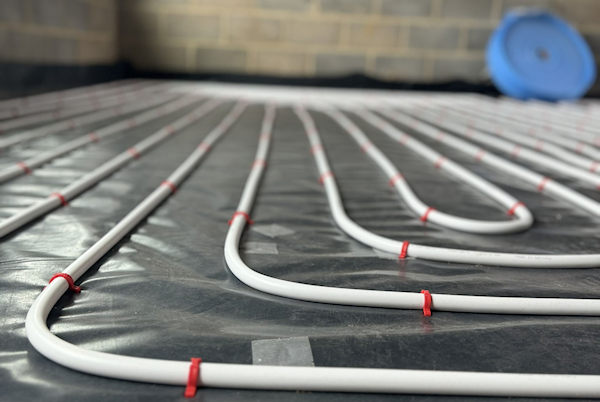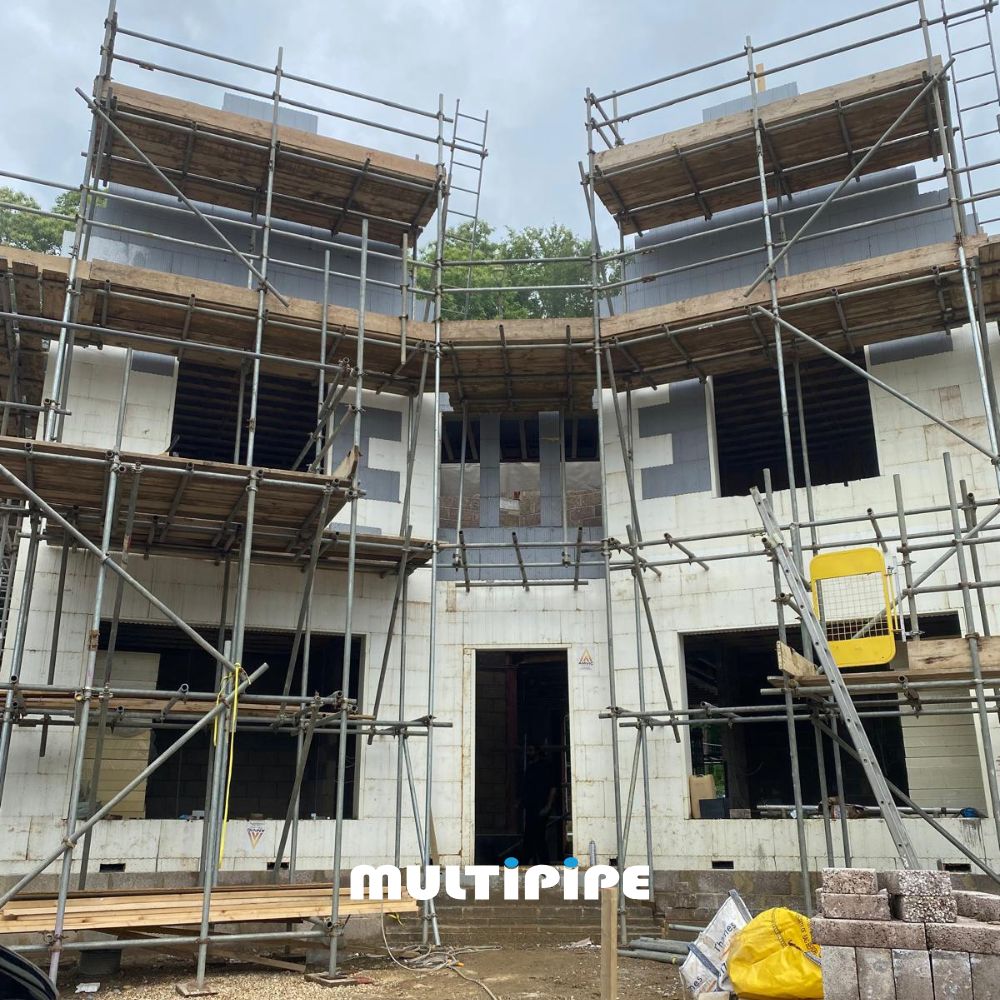
Underfloor heating is becoming an increasingly popular choice for homeowners, especially when it comes to kitchens. But what are the benefits of having underfloor heating in your kitchen?
It offers a more comfortable and effective method of heating a room and it also removes the need for radiators. This gives a modern and tidy appearance to your home. Find out our top benefits and considerations in our blog.
Top Benefits of Underfloor Heating in the Kitchen
Energy Efficiency
- Underfloor heating can be more energy-efficient than traditional radiators, as it distributes heat evenly across the entire floor surface.
- This can result in lower energy bills and reduced carbon emissions.
Comfort and Warmth
- Underfloor heating provides a comfortable and warm surface to walk on, especially in the colder months.
- It eliminates cold spots and drafts that can be common with radiators.
Space Saving
- By installing underfloor heating, you can free up wall space that would otherwise be occupied by radiators or other heating systems.
- This can give you more flexibility in designing your kitchen layout.
Future-proofing
- Typically, in the life span of the pipework, you might change your kitchen over 5 times.
- Removing kitchen features like islands can leave cold spots on the – so ensure you are covering the full area when installing UFH systems!
Cold-bridging
- Where you have a cool outer wall and no insulation between the floor and the wall, you can get cold bridging. This term refers to where the cold air chills the wall to such an extent that it will conduct to the floor and cool the floor itself.
- In older houses, this can lead to damp where the warm surface meets a cold surface. At the very least, having no pipe where your units are and standing at the plinth, you will still get a 100-200mm area where the floor is cold (even in a modern house), which is not ideal next to kitchen sinks where you tend to stand.
- Ensure the pipe goes at least 300mm under the kitchen unit to eliminate this issue.
Considerations before Fitting Underfloor Heating
Flooring Type
- Different types of flooring, such as tiles, laminate, or engineered wood, have different compatibility with underfloor heating.
- It is important to check the manufacturer’s guidelines to ensure that your chosen flooring is suitable for use with underfloor heating.
Kitchen Units
- Before fitting underfloor heating, you need to consider the height and weight of your kitchen units.
- Underfloor heating can raise the floor level, which may affect the installation of your units.
- It is important to plan and make any necessary adjustments to accommodate the underfloor heating system.
Will adding underfloor heating under units add more cost?
- Generally, for the size of the kitchen units, the increasing cost is marginal, and to add floor heating later into an unheated area is far more expensive.
- However, if you are still unsure, our recommendation is to add the pipe still but add insulation in the kick space, eliminating all heat but futureproofing the system.
Pipework under appliances
- Most appliances will not be affected by having UFH under them, so to future-proof the install, add the pipe. However, where the fridge is to be placed, we recommend not to install pipework, as it does decrease the unit’s efficiency.
Will Underfloor Heating damage the kitchen units?
Underfloor heating should not damage kitchen units if installed correctly, and with proper planning, there will be no problem. Some people are pressured by kitchen fitters who tell them it would damage the cupboard or bake items in the cupboard, but this will not happen.
But it is worth remembering wooden floors are used on UFH without issues. So, a cabinet 200mm off the floor will not warp or twist, and it will not bake goods in the cupboard!
In the many years of specifying underfloor heating, Multipipe have never had issues with damage to units or products inside. This is because underfloor heating, by the regulation, must run at a dictated (BS 1264) floor temperature of only 9°C warmer than the air around it. By the time this goes through the air gap and to the cupboard itself, this temperature is of no concern.
Find out more in our blog: Fitting Underfloor Heating under Kitchen Units
Conclusion
Fitting underfloor heating in kitchens can provide numerous benefits, including energy efficiency, comfort, and space-saving. It’s a popular misconception that underfloor heating will damage kitchen units, but this is not the case.
However, it is important to consider the flooring type and plan ahead to accommodate the underfloor heating system. Contact your local installer to get underfloor heating installed in your kitchen – and remember to ask for Multipipe MLCP.












